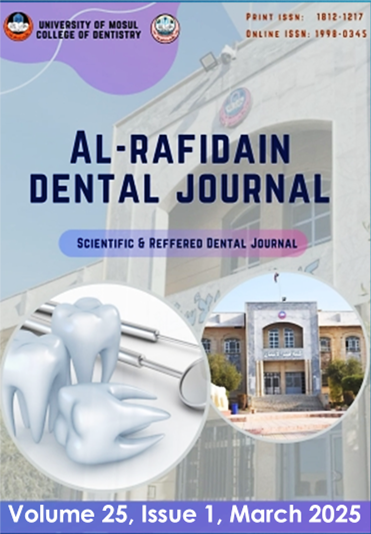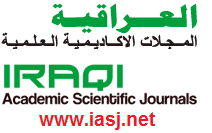Modulation Effects of Formulated Topical Nifedipine Ointment on IL- 6 and C-Reactive Protein During Facial Skin Wound Healing in Rabbits
Abstract
The current study aimed to assess the modulation effect of 1% and 2% topical nifedipine ointment on IL-6 and CRP during facial skin wound healing in rabbits. Materials and Methods: Nifedipine ointments of 1% and 2% were prepared. Fifty healthy male rabbits were included and divided equally into two groups based on the research period: group A (7 days) and group B (14 days). Each group was divided into five groups, each with five rabbits. Group I (normal), Group II (negative control), Group III (positive control), Group IV(NFD1%), and Group V (NFD 2%). All animals except group I were anesthetized. A circular, full-thickness excisional wound of 1 cm in diameter was surgically induced on each rabbit's forehead. The wounds were left open; group II did not receive any treatment. Group III, Group IV, and Group V were treated topically twice daily with white petrolatum jelly, nifedipine ointment 1%, and nifedipine ointment 2%, respectively, until the day of euthanasia. Blood samples (5 mL) were collected on the 7th and 14th days from all animals via the jugular vein during euthanasia. The serum was separated for measurement of IL-6 and CRP. Results: On the 7th day, there was a significant rise in IL-6 and CRP levels in the NFD1% and NFD2% groups compared to the other groups, but the increase will be greater in the NFD2% group. On the 14th day, there was no significant difference in IL-6 levels among the normal, negative control, and NFD1% groups, but there was a significant difference between the NFD2% group and the other groups. There was no significant difference in the CRP level between the NFD1% and NFD2% groups. Conclusions: Topical application of NFD1% ointment improves facial skin wound healing in rabbits by moderately modulating the inflammatory response and accelerating wound closure, whereas the modulating effect of NFD2% ointment delayed healing.












